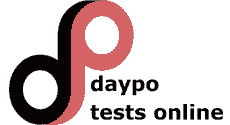SWE
|
|
Title of test:
 SWE Description: final software |



| New Comment |
|---|
NO RECORDS |
|
By developing the software incrementally, it is cheaper and easier to make changes in the software as it is being developed. T. F. Do not assume that readers understand technical software engineering language. T. F. Plan-driven and agile proesess are suitable for different types of software. T. F. A software process is a sequence of activities that leads to the production of a software produc. T. F. Professional software is usually developed by teams rather than individuals. T. F. Developing trustworthy software is considered one of the most key challenges facing software engineering. T. F. Rapid prototyping with end-user involvement is the only sensible way to develop graphical user interfaces for software systems. T. F. Roughly 40% of software costs are development costs; 60% are testing costs. T. F. Plan-driven activities (ex. specification, development, and validation) are interleaved rather than separate, with rapid feedback across activities. T. F. Production of games products need to develop several versions of prototype. T. F. Software has maintainability attribute mean that, it should not make wasteful use of system resources such as memory and processor cycles. T. F. in software validation step, the software is modified to reflect changing customer and market requirement. T. F. User requirements can’t be written in natural language supplemented by appropriate diagrams and tables. T. F. A use case model can be taken as a simple scenario that describes what a user expects from a system. T. F. System managers are not considered as stakeholders. T. F. The process of finding out, and checking these services and constraints is called requirements engineering. T. F. One of the most IEEE codes of ethics, Software engineers shall not act consistently with the public interest. T. F. Structural models of software display the organization of a system in terms of the components that make up that system and their relationships. T. F. Plan-driven processes are processes where all of the process activities are planned in advance. T. F. Software validation mean that it meets the expectations of the system customer, while software vervication mean that it conforms to its specification. T. F. in extreme programming, requirements are expressed as scenarios (called user stories), which are implemented directly as a series of tasks. T. F. Class diagrams in the UML can not be expressed at different levels of detail. T. F. in web-based systems, it is expensive to change and upgrade the software. T. F. The term ‘system requirements’ means the high-level abstract requirements and ‘user requirements’ means the detailed description of what the system should do. T. F. . Graphical models are most useful when you need to describe a sequence of actions. T. F. A system stakeholder is anyone who should have some direct or indirect influence on the system requirements. T. F. Open interviews, where the stakeholder answers a pre-defined set of questions. T. F. Consistency checks mean that, Requirements in the document should not conflict. T. F. Software engineers shall not advance the integrity and reputation of the profession consistent with the public interes. T. F. Sequence diagrams, which are used to model interactions between system components, although external agents may also be include. T. F. |





